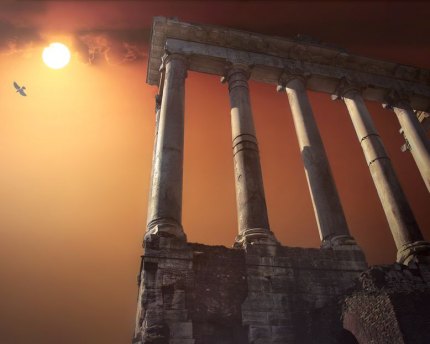Saturnalia: The party that became Christmas

Thank the ancient Romans for the festival, which was first celebrated Dec. 17, according to the U.S. Library of Congress. The celebration of agriculture, dedicated to the god Saturn, was such a hit that it was extended to a seven-day party. Here is the rundown, along with links for further study:
What do we know about the Saturn of mythology? Saturn was "originally one of the Numina, the protector of the sowers and the seed," explains Edith Hamilton in the classic book, Mythology: Timeless Tales of Gods and Heroes. (Penguin, 1940). Saturn's wife, Ops, was a harvest helper. "In memory of the Golden Age, when he reigned in Italy, the great feast of Saturnalia was held every year during the winter. The idea was that the Golden Age returned to earth during the days it lasted."
What happened during Saturnalia? Wars could not be declared, Hamilton writes. "Slaves and masters ate at the same table; executions were postponed." Presents were exchanged.
Why is it in December? The date "has been connected with the winter sowing season, which in modern Italy varies from October to January," recounts Encyclopedia Britannica. In the third century, the Romans also celebrated the rebirth of the Unconquered Sun (Sol Invictus) -- the winter solstice -- on Dec. 25.
How did Saturnalia get dropped in favor of Christmas? "The church in Rome began formally celebrating Christmas on Dec. 25 in 336, during the reign of the emperor Constantine," a Britannica article explains. "As Constantine had made Christianity the effective religion of the empire, some have speculated that choosing this date had the political motive of weakening the established pagan celebrations."
So when was Christ born? Scholars still argue about this very question. While there is no definitive "birthday of Christ," there are debates about the fabled star of Bethlehem. Some astronomers believe that the star of Bethlehem may have been a "series of events ... known as a triple conjunction between Jupiter and Saturn--with the two planets coming close together in the sky three times over a short period," according to the BBC.
Related:
What does the sun have to do with Christmas?
Like us on Facebook and tell us what you think.

